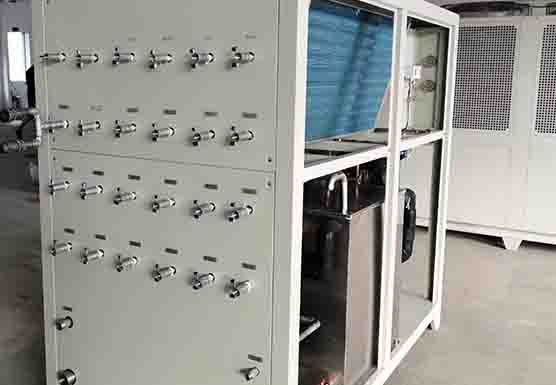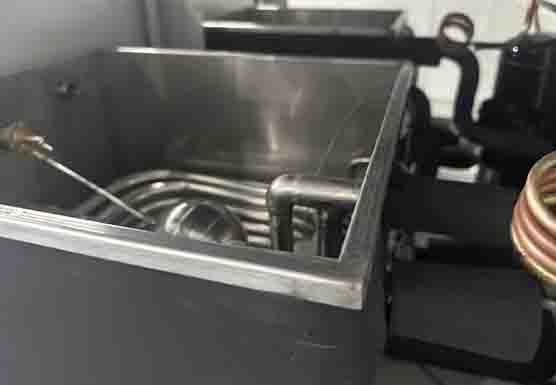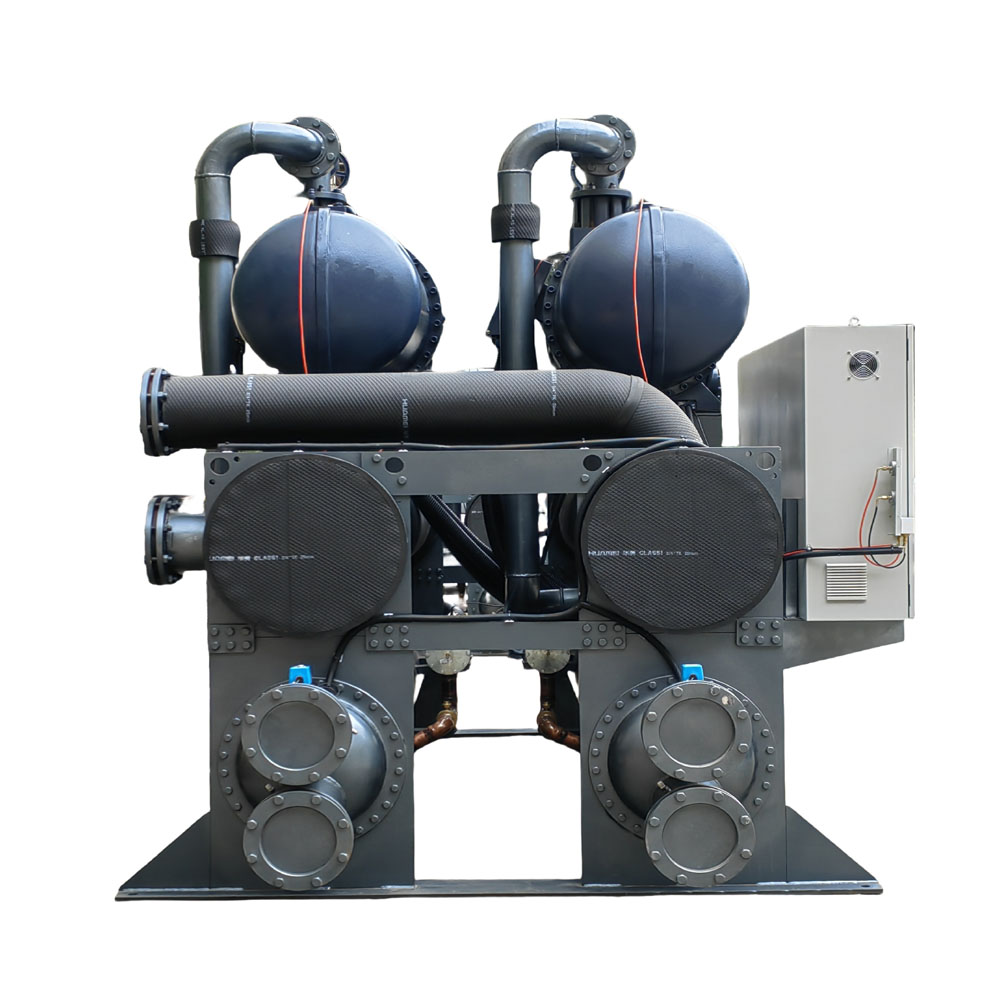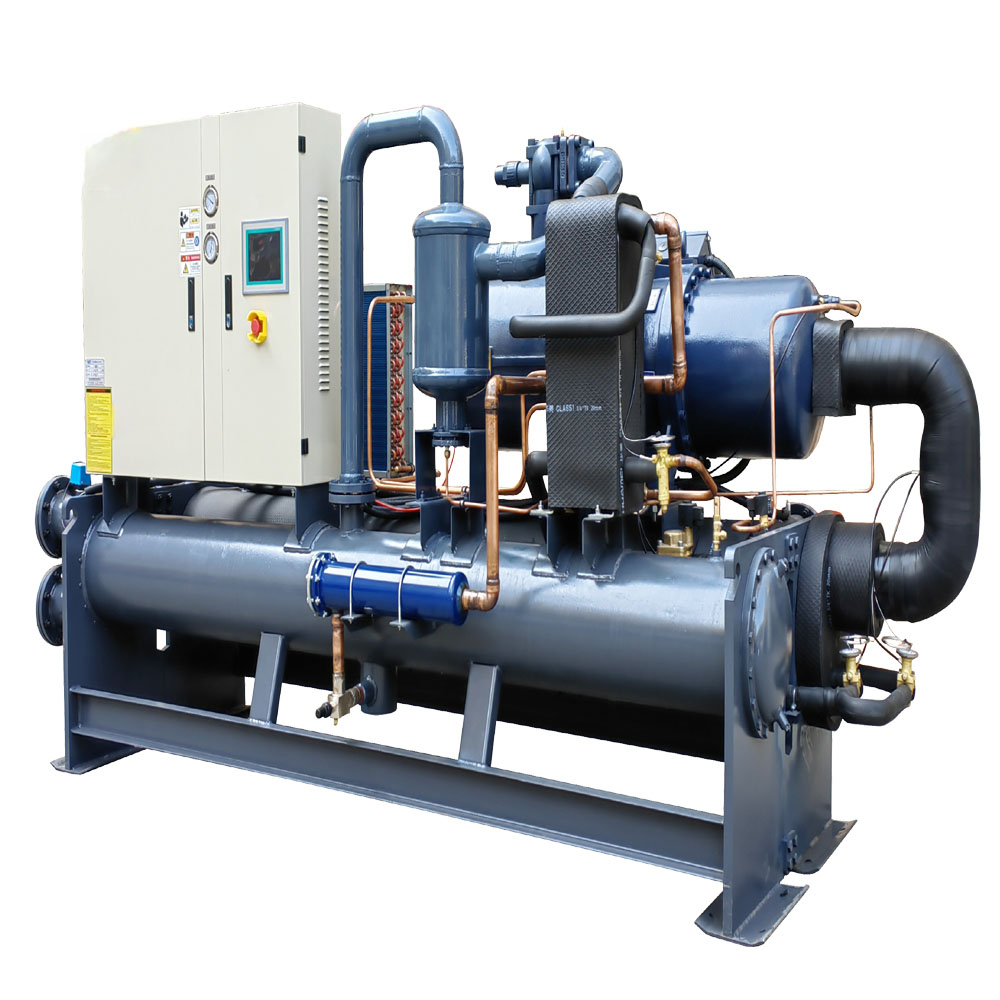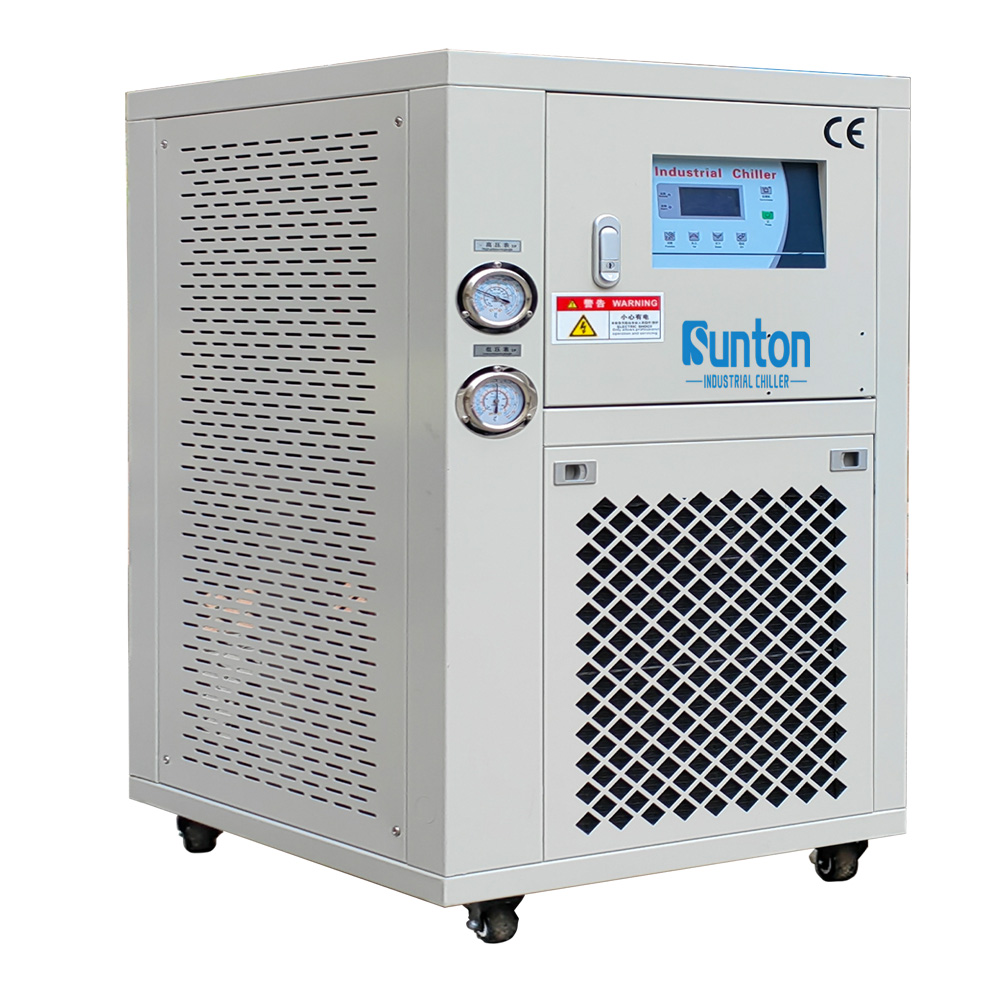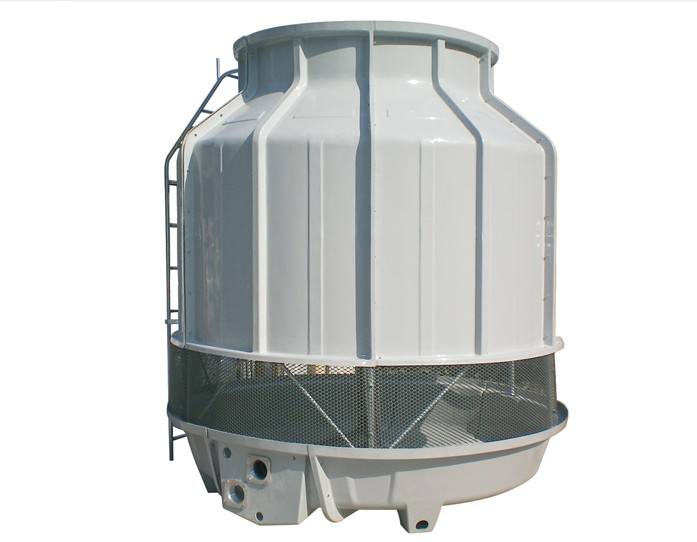-
Dalingshan Industrial Guangdong
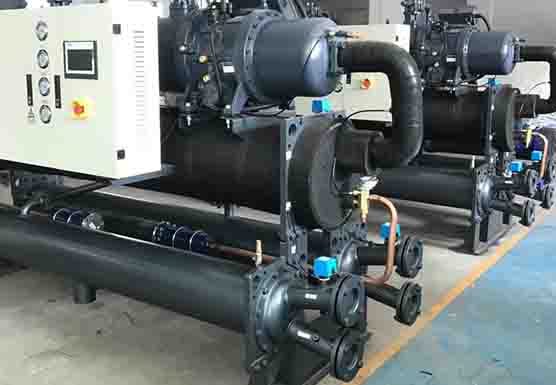
different types of chillers for industrial and commercial use
Comparing Different Types of Chillers for Industrial and Commercial HVAC Systems
This article dives deep into the various types of koelmachines used in industrial and commercial settings. We will explore their operating principles, advantages, and disadvantages, providing you with the knowledge to make an informed decision when selecting the right chiller type for your specific needs. As a professional in the Industrial Water Chiller Manufacturing sector, I’ve seen firsthand how crucial it is to understand these differences. Whether you’re in the Plastics and Rubber Industry, Machining Industry, or any of the numerous sectors we serve, this article will clarify why a thorough understanding of chiller technology is essential and how our tailored solutions can meet your industrial cooling demands, ensuring operational efficiency and product quality. This information will guide you in making the best choice for your business, driving you to learn more, and ultimately encourage you to reach out for a personalized consultation.
Inhoudsopgave
1. What are the Main Types of Chillers?
Chillers are essential components in many industrial and commercial settings, providing cooling for processes and climate control. Broadly, koelmachines are classified into two main categories: vapor compression chillers en vapor absorption chillers. Vapor compression chillers use an electrically driven mechanical compressor to force the refrigerant around the system, while absorption chillers use a heat source to drive the koeling process. Within the vapor compression category, there are four main types: scroll chillers, screw chillers, centrifugal chillers, and reciprocating koelmachines. As an expert in this field, I’ve helped numerous businesses in the Food and Beverage Industry, Chemical and Pharmaceutical Industry, and others, select the right type for their specific needs.
Each chiller type has unique characteristics, making it suitable for specific applications. For example, scroll chillers are often preferred in smaller to medium-sized applications due to their energy efficiency and quiet operation. In contrast, centrifugal chillers are ideal for large-scale HVAC systems in commercial buildings and industrial facilities. For our clients in the Medical Industry and Laboratories and Research Institutions, choosing the right chiller is vital for maintaining precise environmental conditions. Understanding the differences between these types of koelmachines can significantly impact your operational efficiency and bottom line.
2. How Does a Water-Cooled Chiller System Work?
Water-cooled chillers use water from a cooling tower or another water source to remove heat from the refrigerant. These koelmachines are highly efficient in transferring heat, making them ideal for industrial processes that require large amounts of cooling. In my experience manufacturing waterkoelers, I’ve seen how effectively they maintain consistent temperatures for clients, particularly those in the Plastics and Rubber Industry and the Electronics Industry. A typical water-cooled chiller system consists of an evaporator, compressor, condenser, and expansion valve.
The process begins with the refrigerant absorbing heat in the evaporator, turning it into a low-pressure gas. The compressor then increases the pressure and temperature of the refrigerant gas, which then flows to the condenser. In the condenser, water cools the refrigerant, causing it to condense back into a liquid, releasing the absorbed heat. The high-pressure liquid refrigerant then passes through the expansion valve, which lowers its pressure and temperature, preparing it to start the cycle again. For more detailed information about water-cooled technology, you can explore our Water Cooled Scroll Water Chiller page. Water-cooled chillers are generally more energy-efficient than luchtgekoeld systems, especially in hot climates where the ambient air temperature is high.
3. What is an Air-Cooled Industrial Chiller, and When is it Ideal?
Air-cooled chillers use ambient air to remove heat from the refrigerant. These koelmachines are simpler in design compared to watergekoelde koelmachines, as they do not require a cooling tower or a separate water source. The simplicity makes them easier to install and maintain, which is a significant advantage for many of our clients in the Printing Industry and Laser Industry. An air-cooled industrial chiller consists of an evaporator, a compressor, a condenser, and an expansion valve, similar to a watergekoeld system. However, instead of using water to cool the refrigerant in the condenser, air-cooled chillers use fans to blow air across the condenser coils.
This type of chiller is ideal for applications where water availability is limited or where a cooling tower is not feasible. It is important to note that air-cooled chillers can be less efficient in very hot climates, as their performance is directly affected by the ambient air temperature. Air-cooled chillers take air from their surroundings, cool it, and use it to run machinery or maintain a comfortable temperature. When using this type of chiller, it is necessary to force air across the exposed tubes to maintain an adequate temperature. A great example of this are our Air Cooled Screw Chillers.
4. What are the Advantages of Centrifugal Chillers in Large HVAC Systems?
Centrifugal chillers are commonly used in large commercial and industrial applications due to their high efficiency and capacity to handle large cooling loads. These koelmachines use a centrifugal compressor to compress the refrigerant, allowing them to achieve high levels of cooling. As someone who’s worked extensively in this area, I’ve found that centrifugal chillers are particularly well-suited for large HVAC systems in office buildings, hospitals, and other large facilities. The main components of a centrifugal chiller include an evaporator, a centrifugal compressor, a condenser, and an expansion valve.
One of the key advantages of centrifugal chillers is their ability to operate efficiently at part-load conditions, which is crucial for applications with varying cooling requirements. For our clients in the Data Centers sector, this efficiency is vital. Centrifugal chillers also tend to have a longer lifespan compared to other types of koelmachines, offering a better return on investment over time. Additionally, centrifugal chillers use refrigerants that have low global warming potential, making them a more environmentally friendly option.
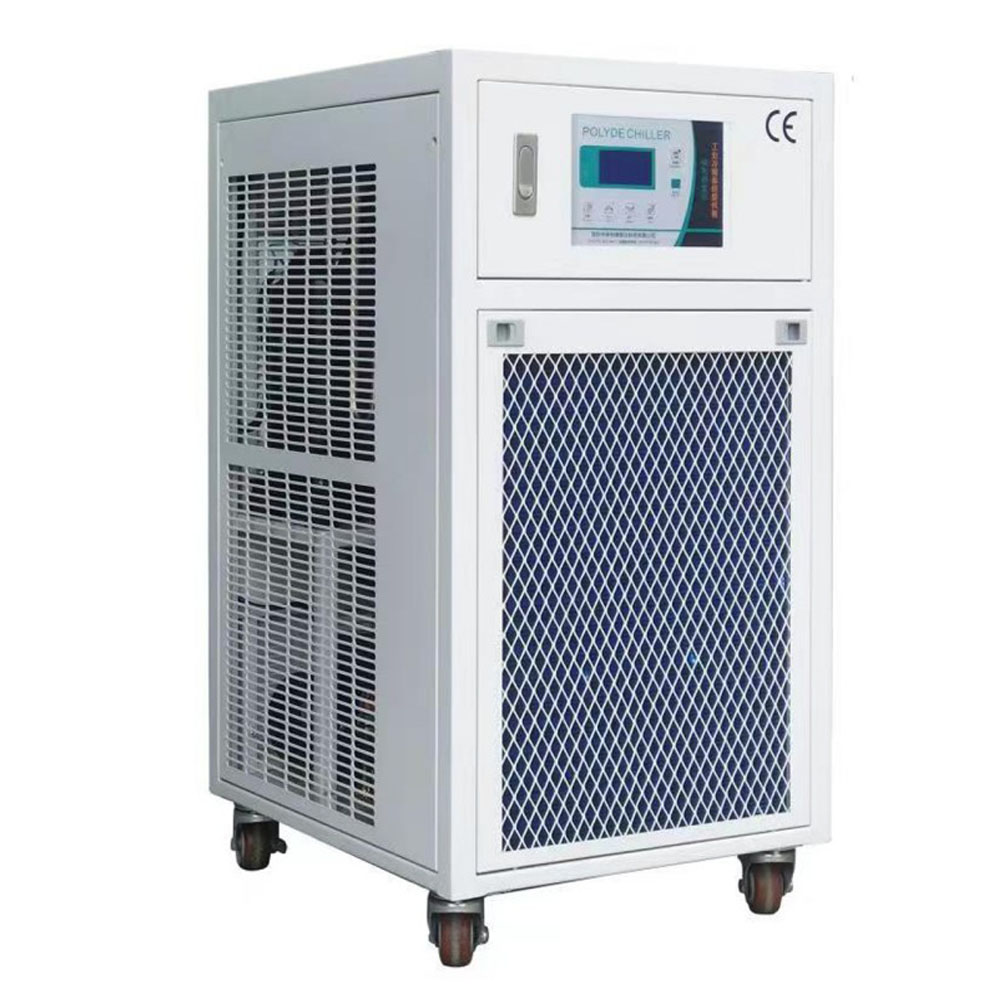
5. Why Choose Screw Chillers for Industrial Applications?
Screw chillers are widely used in a range of industrial applications due to their robust design, efficiency, and reliability. These koelmachines use a screw compressor to compress the refrigerant, providing precise temperature control and consistent performance. From my experience in the Industrial Water Chiller Manufacturing industry, screw chillers are an excellent choice for industries such as the Machining Industry and the Chemical and Pharmaceutical Industry, where stable and precise cooling is crucial.
The main components of a screw chiller are similar to other vapor compression chillers, including an evaporator, a screw compressor, a condenser, and an expansion valve. The screw compressor is the heart of the system, compressing the refrigerant gas to a high pressure and temperature. Screw chillers use a screw compressor to create a cooling effect. Screw chillers are more efficient than other types of koelmachines, making them ideal for industrial settings.
One of the primary benefits of screw chillers is their ability to handle varying loads efficiently. They can operate at a wide range of capacities, making them suitable for applications with fluctuating cooling needs. Additionally, screw chillers generally require less maintenance than other chiller types, resulting in lower operating costs. To see how our screw chillers can benefit your operations, check out our Water Cooled Screw Water Chiller page.
6. How Do Scroll Chillers Benefit Commercial and Industrial Settings?
Scroll chillers are known for their energy efficiency, quiet operation, and compact design. These koelmachines use a scroll compressor, which has fewer moving parts than other compressor types, leading to reduced wear and tear and increased reliability. This makes them a popular choice for both commercial and industrial settings.
Scroll chillers typically consist of an evaporator, a scroll compressor, a condenser, and an expansion valve. The scroll compressor compresses the refrigerant by using two intermeshing scrolls, one stationary and one orbiting. This design results in smooth and continuous compression, minimizing noise and vibration.
Scroll chillers are particularly well-suited for applications that require precise temperature control and quiet operation, such as hospitals, laboratories, and office buildings. For the Medical Industry, the reliability of scroll chillers is paramount. They are also a good choice for smaller to medium-sized industrial processes that need reliable cooling. Scroll chillers use scroll compressors, which are known for their quiet operation.
7. What is the Mechanism of Vapor Absorption Chillers?
Vapor absorption chillers use a heat source, such as steam or hot water, to drive the cooling process, rather than an electrically driven mechanical compressor. This makes them an attractive option for applications where waste heat is available or where electricity costs are high. As a manufacturer, I’ve seen a growing interest in absorption chillers from industries looking to improve their energy efficiency and reduce their carbon footprint.
The basic components of a vapor absorption chiller include an evaporator, an absorber, a generator, and a condenser. The process begins with the refrigerant, typically water, evaporating in the evaporator at low pressure, absorbing heat and providing cooling. The refrigerant vapor is then absorbed by a solution, usually lithium bromide, in the absorber. This solution is pumped to the generator, where the heat source is applied, separating the refrigerant from the absorbent solution. The refrigerant vapor then flows to the condenser, where it is cooled and condensed back into a liquid, releasing the absorbed heat. Finally, the liquid refrigerant returns to the evaporator to start the cycle again.
Vapor absorption chillers are generally less efficient than vapor compression chillers in terms of their coefficient of performance (COP). However, they can be more cost-effective when waste heat is utilized. This type of chiller is often used in cogeneration systems, where the waste heat from electricity generation is used to power the chiller. Our page on Anti-Explosion Chillers can provide further insights into specialized chiller applications.
8. Choosing the Right Chiller: Key Considerations
Selecting the right chiller for your specific application requires careful consideration of several factors. The first step is to determine the cooling load, which is the amount of heat that needs to be removed. This will depend on the size of the space or the nature of the industrial process. The cooling load will influence the capacity of the chiller required.
Another important consideration is the operating environment. For example, if the chiller will be installed in a hot climate, a water-cooled chiller might be more efficient than an luchtgekoeld one. Conversely, if water availability is a concern, an air-cooled chiller might be the better choice.
Energy efficiency is also a crucial factor. Chillers can consume a significant amount of energy, so it’s important to choose a chiller that is energy-efficient and has a high COP. For many of our clients, particularly in the Food and Beverage Industry, energy costs are a major concern. In general, watergekoelde koelmachines are more efficient than air-cooled chillers, but the specific efficiency will depend on the chiller type and the operating conditions.
Maintenance requirements should also be taken into account. Some koelmachines, such as scroll chillers, have fewer moving parts and require less maintenance than others. This can result in lower operating costs over the life of the chiller.
9. How Do Chillers Ensure Optimal Performance in Industrial Operations?
Chillers play a critical role in maintaining optimal performance in many industrial operations. They ensure that processes operate within the required temperature range, preventing overheating and ensuring product quality. For instance, in the Plastics and Rubber Industry, koelmachines are used to cool molds and extruded products, ensuring they solidify correctly and maintain their shape.
In the Machining Industry, koelmachines are used to cool cutting tools and workpieces, preventing thermal damage and extending tool life. For the Chemical and Pharmaceutical Industry, koelmachines maintain precise temperatures during chemical reactions and storage, ensuring product safety and efficacy. Chillers transfer heat out of a process and into another medium, such as water or air. Chillers help keep machinery from overheating.
Chillers are also used in the Food and Beverage Industry to cool products during processing and storage, preserving their freshness and extending their shelf life. For example, koelmachines are used in breweries to cool wort during fermentation and in dairies to cool milk after pasteurization. You can find more information on our Dairy Milk Chillers page.
10. What are the Maintenance Requirements for Different Chiller Types?
Regular maintenance is essential to ensure the reliable operation and longevity of any chiller system. The specific maintenance requirements will vary depending on the type of chiller and the operating conditions. However, there are some general maintenance tasks that apply to all koelmachines.
One of the most important maintenance tasks is to keep the chiller’s coils clean. Dirty coils can reduce the chiller’s efficiency and increase energy consumption. For air-cooled chillers, this means regularly cleaning the condenser coils to remove dust and debris. For watergekoelde koelmachines, it means cleaning the condenser tubes to prevent scaling and fouling.
Refrigerant levels should also be checked regularly. Low refrigerant levels can reduce the chiller’s cooling capacity and increase energy consumption. If a leak is detected, it should be repaired promptly to prevent further refrigerant loss and potential damage to the compressor. Chillers require regular maintenance to keep them running smoothly.
The compressor is the heart of the chiller system, and it should be inspected regularly for signs of wear or damage. For screw en centrifugal chillers, the compressor oil should be checked and changed periodically. Scroll chillers use scroll compressors that require less maintenance compared to other types of koelmachines.
For watergekoelde koelmachines, the cooling tower or water source should also be maintained. This includes treating the water to prevent corrosion and biological growth, which can affect the chiller’s performance.
FAQs
Wat is het verschil tussen een luchtgekoelde en een watergekoelde koelmachine?
Air-cooled chillers use ambient air to remove heat from the refrigerant, while watergekoelde koelmachines use water from a cooling tower or other water source. Water-cooled chillers are generally more efficient, especially in hot climates, but require a water source and more complex installation.
What type of chiller is best for large industrial applications?
Centrifugal chillers en screw chillers are often the best choices for large industrial applications due to their high capacity, efficiency, and ability to handle varying loads.
How often should a chiller be serviced?
A chiller should be serviced at least once a year to ensure optimal performance and longevity. However, the specific service interval may vary depending on the type of chiller, the operating conditions, and the manufacturer’s recommendations.
Can absorption chillers be used in industrial applications?
Yes, absorption chillers can be used in industrial applications, particularly where waste heat is available. They are a good option for improving energy efficiency and reducing operating costs in such settings.
What are the advantages of using a scroll chiller?
Scroll chillers offer several advantages, including high energy efficiency, quiet operation, compact design, and reduced maintenance due to fewer moving parts. They are suitable for both commercial and industrial applications that require precise temperature control.
How do I determine the right size chiller for my needs?
Determining the right size chiller involves calculating the cooling load, which is the amount of heat that needs to be removed. Factors such as the size of the space, the type of equipment, and the industrial process will influence the cooling load. Consulting with a chiller expert can help ensure you select the appropriate size for your specific application.
Summary
- Chillers are essential for cooling in various industrial and commercial applications.
- There are two main types of koelmachines: vapor compression en vapor absorption.
- Vapor compression chillers include scroll, screw, centrifugal, and reciprocating types.
- Water-cooled chillers use water to remove heat and are generally more efficient than luchtgekoeld models.
- Air-cooled chillers use ambient air and are simpler to install and maintain.
- Centrifugal chillers are ideal for large HVAC systems due to their high capacity and efficiency.
- Screw chillers are robust and reliable, suitable for various industrial applications.
- Scroll chillers are energy-efficient and operate quietly, making them ideal for applications requiring precise temperature control.
- Absorption chillers use a heat source instead of electricity, making them cost-effective when waste heat is available.
- Choosing the right chiller depends on factors such as cooling load, operating environment, energy efficiency, and maintenance requirements.
- Regular maintenance, including cleaning coils, checking refrigerant levels, and inspecting the compressor, is crucial for chiller longevity and performance.
- Chillers play a vital role in ensuring optimal performance in industrial operations by maintaining required temperatures and preventing overheating.
- Understanding the different types of koelmachines and their applications can help you make an informed decision and improve your operational efficiency. Our diverse range of koelmachines ensures we can meet the unique needs of industries from Plastics and Rubber to Data Centers.
- If you need a new chiller system, or need to replace an old one, please contact us today for more information!
